Search the Special Collections and Archives Portal
Search Results
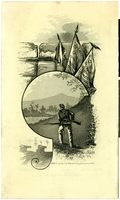
Beckel House, dinner menu, Sunday, March 30, 1884
Date
1884-03-30
Archival Collection
Description
Restaurant: Beckel House Location: Dayton, Ohio, United States
Text
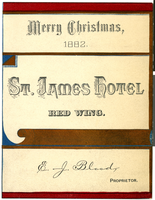
St. James Hotel, Christmas menu, Monday, December 25, 1882
Date
1882-12-25
Archival Collection
Description
Restaurant: St. James Hotel (Red Wing, Minn.) Location: Red Wing, Minnesota, United States
Text

Revere House, Christmas menu, Monday, December 25, 1882
Date
1882-12-25
Archival Collection
Description
Restaurant: Revere House Location: Springfield, Illinois, United States
Text

Dunlap House, Easter menu, April 13, 1884
Date
1884-04-13
Archival Collection
Description
Note: Image on cover is surrounded by a pink fringe Menu insert: Poems Restaurant: Dunlap House Location: Jacksonville, Illinois, United States
Text
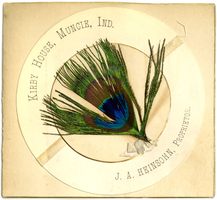
Kirby House, Christmas dinner menu, Monday, December 25, 1882
Date
1882-12-25
Archival Collection
Description
Note: Peacock feather and ribbon attached to the front of the menu Restaurant: Kirby House (Restaurant: Munice, Ind.) Location: Muncie, Indiana, United States
Text
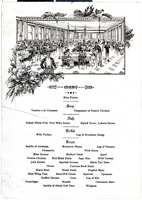
Grand Pacific Hotel, 34th annual game dinner menu, Saturday, November 23, 1889
Date
1854 to 1939
Archival Collection
Description
Restaurant: Grand Pacific Hotel Location: Chicago, Illinois, United States
Text

Hotel Ossawinamakee, Christmas menu, date unknown
Date
1870 to 1933
Archival Collection
Description
Note: Embossed image on menu cover. Noted on menu: "The water used on these tables is from our own artesian well." Restaurant: Hotel Ossawinamakee Location: Manistique, Michigan, United States
Text
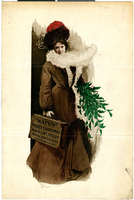
Missouri-Kansas-Texas Railway System dining services, Christmas dinner menu, December 25, 1903
Date
1903-12-25
Archival Collection
Description
Note: Emblem for the Missouri-Kansas-Texas (The M. K. and T.) Railway System on the back of the menu Restaurant: Missouri-Kansas-Texas Railway System dining car Location: Smithville, Texas, United States
Text

St. Nicholas Hotel, Thanksgiving dinner menu, 1911
Date
1911-11
Archival Collection
Description
Note: Menu is bound by a brown cord with a tassel. Features a graphic of a shamrock-horseshoe-wishbone design. Embossed corn stalks on the front and back cover Restaurant: St. Nicholas Hotel (Springfield, Ill.) Location: Springfield, Illinois, United States
Text
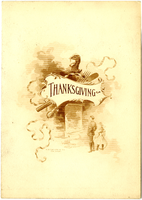
Monte Christo Hotel, Thanksgiving dinner menu, date unknown
Date
1870 to 1933
Archival Collection
Description
Restaurant: Monte Christo Hotel Location: Salida, Colorado, United States
Text
Pagination
Refine my results
Content Type
Creator or Contributor
Subject
Archival Collection
Digital Project
Resource Type
Year
Material Type
Place
Language
Records Classification
